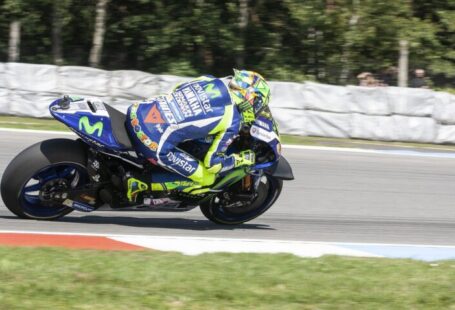Wind noise inside a motorcycle helmet can reach 115 decibels or more at highway speeds. Hearing loss can be caused by sounds of just 85 dB or more, so this is a huge problem. Here’s how to fix it with the five quietest (according to us) motorcycle helmets available.
What Makes A Helmet Quiet?
Aerodynamics. The easier a helmet slips through the wind, the quieter it will be. Some of the quietest helmets on the market are made by Schuberth. The German company is also the only helmet manufacturer we know of with a wind tunnel in its headquarters. Shoei is probably in second place when it comes to quiet helmets, that company is also heavily reliant on wind tunnel testing, even designing its own rig to move a helmet side-to-side and up and down in the tunnel to accurately recreate real world riding conditions.
The purpose of all this aerodynamic research is to determine the best way to deal with turbulence, which is what creates noise. That turbulence can be caused by an anything that disrupts the wind flow. Gap in your visor seal? Huge external vents? Air getting caught under your chin? That’s how a helmet gets noisy.
Addressing those things is how you make a helmet quiet – by starting with a shape that allows the air to smoothly reconnect behind the helmet and eliminating those trouble spots. If you want a quiet helmet, look for a clean, smooth, aerodynamic shape free of too many external vents and wings. Additionally, the helmet should feature a quality, adjustable visor seal and should close snugly around your neck.
How Do You Make a Helmet Quiet?
Earplugs. If you don’t ride with them now, start doing so. Wind-noise-induced hearing loss is a real thing and sitting in such a high decibel environment for extended periods exacerbates fatigue. RideApart highly recommends Howard Leight Max ear plugs. Buy a box of 200 and stash extra pairs in all your pockets.
Going further, a chin curtain helps, as does a good visor seal. The screws that mount your visor base plate can often be adjusted to find a perfect fit and the Shoei RF1200 innovates with a novel visor location adjustment, enabling you to quickly and easily get a perfect seal. It’s also worth considering a neoprene wind-blocking sleeve which seals the gap between helmet and neck both reduces noise and keeps errant detritus out of your face.
Keep in mind, though, that what you ride and how you hold your head are also major factors in wind noise. For example, if you ride a track-focused helmet on a cruiser, holding your head upright and not tilting it forward as if in a tuck, it’s likely you won’t benefit as much from the helmet’s hearing-protection qualities.
RideApart’s own wind tunnel is beset by construction delays, so lacking any repeatable, non-variable-polluted objective test method, we’re going to have to bring you anecdotal reporting. Below – in no particular order – are the five helmets that, in decades of cumulative riding careers, the RideApart staffers report are the quietest currently available:
Arai RX-7V
A favorite of the mysterious Randle McMurphy, the Arai RX-7V is a pricey helmet, but worth it for the comfort and quiet it provides. Arai enjoys talking up its exceptionally round external helmet shapes as a safety feature, but that smooth exterior also has an effect on wind noise – allowing it to slip by more easily.
Schuberth C3 Pro
Still one of the quietest helmets available, the C3 Pro transfers just 84 dB to the rider at 65 mph. That’s even better than the old S2 full-face because Schuberth is able to equip the C3 Pro with a tighter-sealing neck roll thanks to the flip-front design and its greater ease of ingress and egress. “Tubulators” on the visor further reduce turbulence in what’s otherwise a traditional problem area.
HJC RPHA 11
This is the one of the quietest helmets we’ve ridden in, though, keep in mind the above caveat about what you ride and how you hold your head. On the Triumph Bonneville Bobber the RPHA 11 experience was unpleasant. On other bikes, though: amazing. On the higher end of the price scale for an HJC helmet, but generally worth the extra dough.
Shoei GT-Air
Considering this models’s big selling point is its ability to move a lot of air through the helmet (thereby keeping you cool), the GT-Air is surprisingly quiet at high speed. But, as we say, Shoei puts a lot of work into its products. You pay for what you get, of course, but the price tag isn’t too much different than most of the other helmets listed here.
Shark EVO-ONE
Considering the cost of the other helmets on this list, we decided to include one that’s a little more reasonably priced. The EVO-ONE flip-front helmet won’t create the same fortress of solitude as other helmets listed here but when paired with a decent set of earplugs it leaves little to be desired. French company Shark is ballsy enough to incorporate the best design ideas of other manufacturers, so keen eyes will likely spot certain visual similarities with more expensive Arai products.



